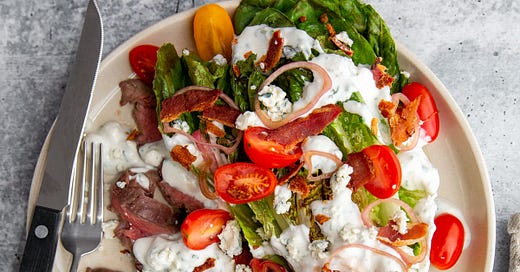Happy Friday, friends! Today’s recipe epitomizes what I love about summer cooking—it’s a dynamic dinner that’s packed with flavor and texture, but it’s also easy to make (it would be perfect for Father’s Day if you’re celebrating). It’s a grilled wedge salad featuring smoky romaine, a creamy blue cheese dressing, sweet tomatoes, quick pickled shallots, …
Keep reading with a 7-day free trial
Subscribe to Mind, Body, Spirit, FOOD to keep reading this post and get 7 days of free access to the full post archives.




